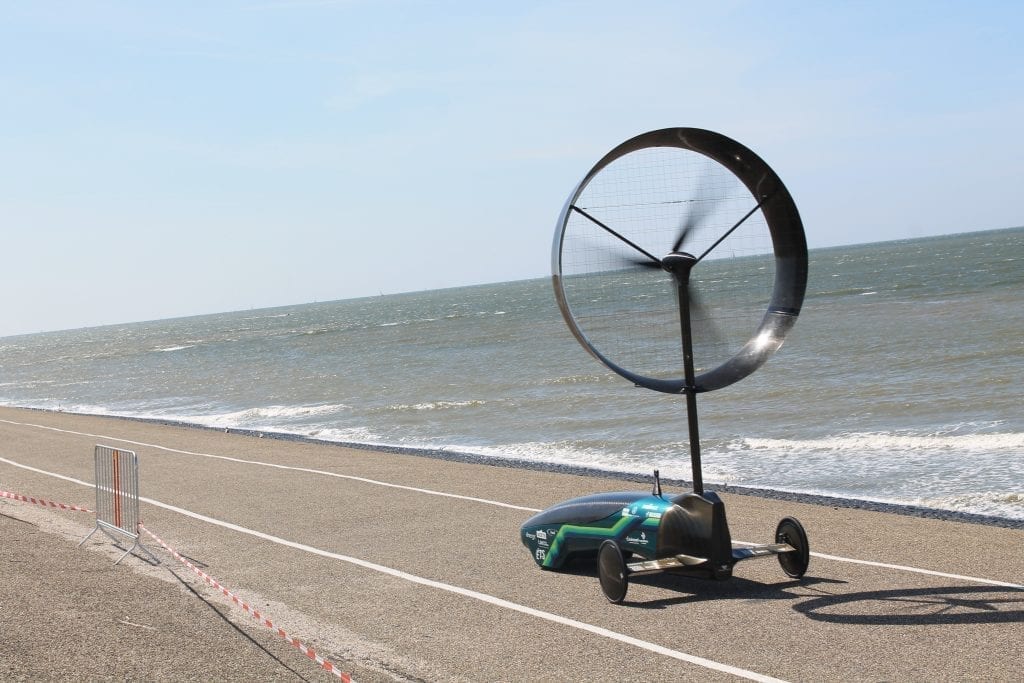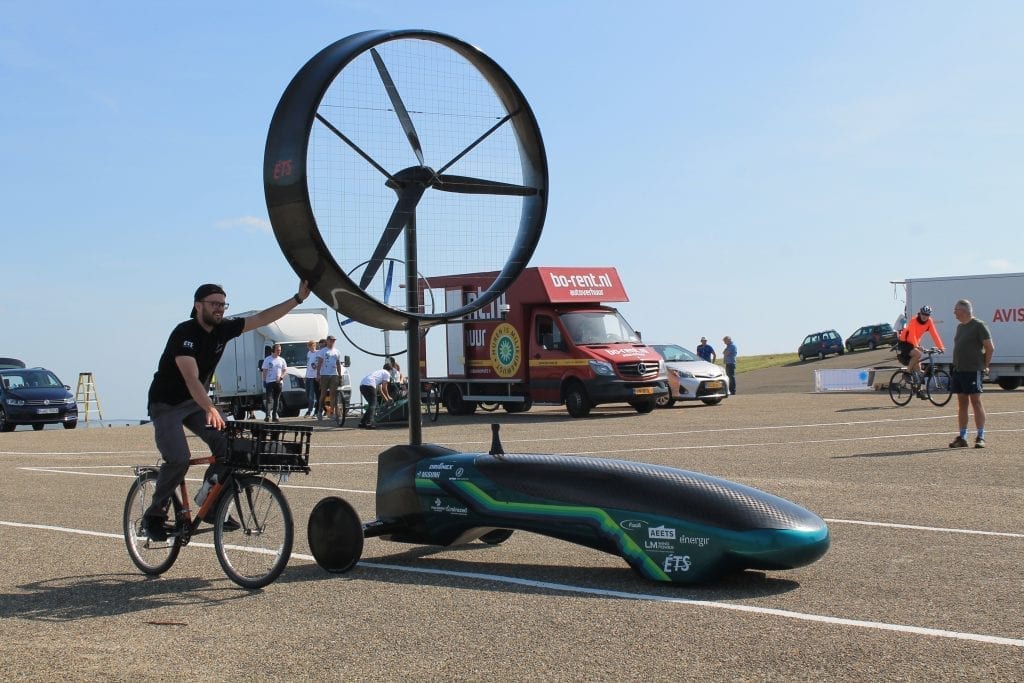The Montreal-based engineering team Chinook designs cars powered solely by the wind. In a landscape where personal vehicles account for a major part of the global carbon footprint, Chinook is creating innovative, sustainable solutions that may, in the near future, transform the way we travel.
Multiple times a year, powerful, moist winds called Chinooks — named for the native tribes who first described them — descend from the atmosphere and sweep across Canada, spreading massive stratus clouds across the sky. A group of innovative students from Montreal has adopted the same name, as they are harnessing the power of the wind like no one before.
Siméon Picard is one such student who has become enchanted by the invisible forces that blow. Picard is a team member of Chinook, an innovative engineering team in Montreal that designs cars. These cars, however, are unlike those found on the street. They are powered solely by wind.

The vehicle looks like something out of Star Wars. Atop its tube-like chassis sits a massive windmill, which converts the motion of the wind into mechanical energy that powers the car. A series of Lenovo computers — “the brains of the car” — provide the operating mechanism for the incredibly data-intensive project.
“It’s really like a bicycle,” Picard says of the car. “The windmill is like the pedals.”
Each year, the Chinooks travel to the Netherlands to compete in Racing Aeolus, a competition held annually in the Netherlands on the blustery shore of the North Sea. The goal of the competition is to achieve the greatest possible efficiency in terms of average speed ratio in relation to wind speed.

In 2019, the team took home first place in four out of five competitions during Racing Aeolus, the university wind-powered vehicle competition held at Den Helder in the Netherlands: fastest race, endurance, drag race and best overall. They even set a new world record of 114.87-percent efficiency, leagues higher than the previous record of 102.
The team’s goal is to design creative, beautiful, and sustainable solutions, using that which blusters around all of us. And with climate change an ongoing threat — personal vehicles account for 1/5th of the United States’ carbon footprint — the push for energy-efficient transportation is all the more urgent.

Each vehicle is designed and produced using Lenovo ThinkPads. The machines are the perfect tools for every aspect of the data-heavy project: they have all-day battery life, lots of storage, easy docking options and, on race day, can handle the heavy winds blustering around the racetrack. Plus, they’re excellent for running 3D CAD design, SOLIDWORKS and Alchemy programming languages.
Data is the key word here. Each car is equipped with six sensors with acquisition speeds ranging from less than 1 millisecond to 250 milliseconds. The data generated on each test run is used to enhance the algorithm used to control the orientation of the blades — a task performed with impressive efficiency by the Lenovo ThinkPads, which enable the team to extract data from the vehicle’s computer to tweak the algorithm on the spot.
“It’s like tuning a car!” Picard explains.
Chinook is most certainly invested in the future. While they hope their technology may one day change the way we use the wind, the interim objective is to train the next generation of engineers about design and sustainability.

“There’s really a lot of things you start learning quickly,” Picard says of joining the team. “I learned about teamwork, responsibility, learned that no one is going to do the job for you. It’s a really immersive experience.”
When will we see wind-powered cars on the road? Perhaps never, according to Picard, since the cars are limited by the direction the wind blows. Even so, Chinook’s designs have far-reaching potential. They may transform wind turbine technology and even the way we recharge batteries. Already, the team has been approached by the Netherlands Royal Navy regarding the technologies used on their vehicle.
“It’s important to keep pushing our designs,” Picard says, “because there’s high hopes the technology we’ve created will be used in a transportation method of tomorrow.”
